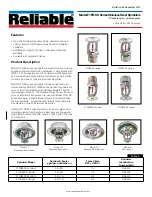
W
ITHOUT
C
OAX
*
W
ITH
C
OAX
30
(GB- '99)
The following pages show the installation diagrams most often used in the video-intercom system. Upon request Farfisa supplies
installation diagrams for the configurations not present in this manual.
Multi-way systems with 1, 2 and 3 entrances
Combination intercom video-intercom systems
Multi-way systems with main entrance and auxiliary entrances
Intercommunicating multi-way systems with 1 or more entrances
One or two-way systems
One or two-way systems with intercommunicating service between monitor and intercom
For a clearer understanding of the diagrams, the sequence of terminals in each individual article has not been followed. Only the
terminal code is valid (letter e/o number) not the graphic sequence.
The items may have more terminals than the ones in the installation diagrams. The excess terminals must not be utilized.
The conduit of the wires of any video and video-intercom system must be carried out separately from the light or industrial system
as prescribed from the International standards.
It is advisable to provide behind the (fused spur) power supply a disconnecting and safety switch.
Before connecting the unit, make sure its data correspond to those of the mains.
The installation diagrams for 1 or more external stations illustrated in this technical manual have been represented with a one
monitor for each user. However, it is possible to “personalise” the installation by matching properly to the “base” diagrams of pages
31, 33, 37, 39, 41, 43, the applications of pages 50, 51, 52, 53, and 54. For further details, see page 48.
The installation diagrams from page 33 to page 47 use control panels of Mody or ErreP/R series (and camera unit 1385R), and
they can also be used for one-way installations and video kits of the Mody series. Connect one monitor, by using a one call wire,
and not the video distributor (the coaxial cable is connected directly to the monitor wall bracket).
Graphic designs
For a better comprehension of the installation diagrams we have made a list of the graphic symbols most often used.
Speaker
Microphone
Buzzer
Button
Additional electronic bell
Resistance
Lamp
Coaxial cable
Optional wire (usually control switching ON or intercommu-
nicating calls)
N2
Nn
INSTALLATION DIAGRAMS
Dashed line (for schematic purposes the first and last moni-
tors are designed in the multi-family systems. Theoretically
the needed monitors are inserted in such dashed lines to
complete the system)
Call wires (second and last)
Graphic overlap point to adjust the “application” diagram to
the “base” diagram (see page 48).
*
M
ODY
*
E
RRE
P/R
*
P
ROJECT
*
P
UNT
O
V
IRGOLA
*
S
LIM
















































